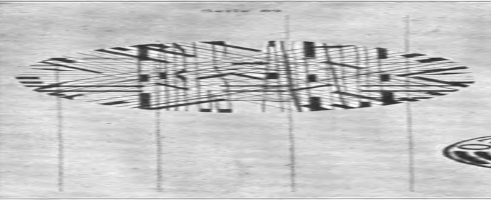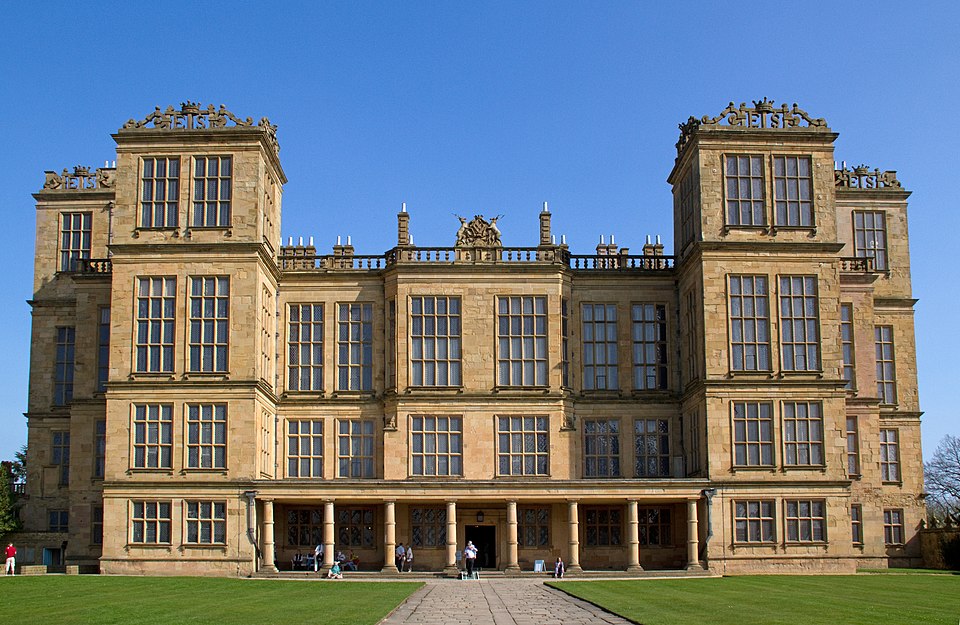An anamorphic portrait of Isaac Asimov, by Marcos Sachs.
More at Sachs’ YouTube channel.
An anamorphic portrait of Isaac Asimov, by Marcos Sachs.
More at Sachs’ YouTube channel.
Aphorisms from Norman Macdonald’s Maxims and Moral Reflections, 1827:
“Most men know how to take offence; but few know how to forgive — pride is always impatient; magnanimity, tolerant and pacific.”
Is this typeface, by artist and calligrapher Dmitry Lamonov, uppercase or lowercase? It’s both!
He’s done the same thing in Cyrillic.
‘I send you a post card which was delivered safely the day after it was posted. I think the address reflects credit on both the ingenuity of the sender and the cleverness of the Post Office officials.’ — A Folkestone Correspondent
(From Strand, December 1903.) (Click to enlarge.)
UPDATE: A number of readers have asked for the solution. The Strand gives none, and perhaps had none, but a diligent postal worker who viewed the envelope edge-on would have discovered that the circle is composed of four overlapping sets of letters, offset from one another by 45 degrees and each so tall and narrow as to be otherwise unreadable. When they’re viewed at an angle, perspective condenses the letters into four phrases:




By my best reading, the address is C.H. BRUCE, ESQR, EARLS AVENUE, FOLKESTONE, ENGLAND.
A puzzle by Ying Zhou, Daniel Irving, and Walter Gall of Rhode Island College, from the February 2012 issue of Math Horizons:
A sports team is divided into “red” and “blue” groups of 10 players each. Each player puts his belongings into a bag of his team’s color and puts it into one of 20 lockers, choosing at random. All the players leave the room. Presently one of the red team returns and can’t remember which locker is his. He and the janitor make a bet: The player can keep opening lockers so long as each bag he discovers is red. If he finds his bag, the janitor will give him $7. If not, he’ll owe the janitor $1. Should the player take the bet?

“The discovery of a new dish does more for human happiness than the discovery of a new star.” — Jean Anthelme Brillat-Savarin
The ancients who wished to illustrate illustrious virtue throughout the kingdom, first ordered well their own states. Wishing to order well their states, they first regulated their families. Wishing to regulate their families, they first cultivated their persons. Wishing to cultivate their persons, they first rectified their hearts. Wishing to rectify their hearts, they first sought to be sincere in their thoughts. Wishing to be sincere in their thoughts, they first extended to the utmost their knowledge. Such extension of knowledge lay in the investigation of things.
Things being investigated, knowledge became complete. Their knowledge being complete, their thoughts were sincere. Their thoughts being sincere, their hearts were then rectified. Their hearts being rectified, their persons were cultivated. Their persons being cultivated, their families were regulated. Their families being regulated, their states were rightly governed. Their states being rightly governed, the whole kingdom was made tranquil and happy.
— Confucius, The Great Learning, 500 B.C.E
This is charming somehow: a detailed portrait of a place that doesn’t exist. During the Cold War, U.S Army cryptologist Lambros D. Callimahos devised a “Republic of Zendia” to use in a wargame for codebreakers simulating the invasion of Cuba. (Callimahos’ maps of the Zendian province of Loreno are below; click to enlarge.)
The Zendia map now hangs on the wall of the library at the National Cryptologic Museum. The “Zendian problem,” in which cryptanalysts students were asked to interpret intercepted Zendian radio messages, formed part of an advanced course that Callimahos taught to NSA cryptanalysts in the 1950s. Graduates of the course were admitted to the “Dundee Society,” named for an empty marmalade jar in which Callimahos kept his pencils.
08/02/2025 UPDATE: Apparently they speak Esperanto in Zendia, or at least their cartographers do. “Respubliko” is Esperanto for “Republic,” “Bovinsulo” and “Kaprinsulo” are “Cow-Island” and “Goat-Island”, and so on. (Thanks, Ed and David.)
The last movement of Mahler’s sixth symphony calls for the sound of a hammer, which the composer indicated should be “brief and mighty, but dull in resonance and with a non-metallic character (like the fall of an axe).” (The two blows represent the death of Mahler’s daughter Maria and the diagnosis of his heart condition.)
Because no recognized instrument exists to fulfill this function, symphonies have had to devise their own solutions, often striking a wooden box or bass drum with a mallet or sledgehammer. Houston Symphony percussionist Brian Del Signore built a 22-pound custom hammer and a wooden box to receive the blow.

scattergood
n. a person who spends money wastefully
Built in the 16th century to flaunt its owner’s wealth, Hardwick Hall, in Derbyshire, boasted large windows when glass was a luxury. Children called it “Hardwick Hall, more glass than wall.”
Unfortunately, writes Stephen Eskilson in The Age of Glass (2018), “a cold day saw the chimneys of Hardwick Hall drawing cold air through the drafty windows and circulating it again to the outside,” “a sui generis example of thermal inefficiency.”